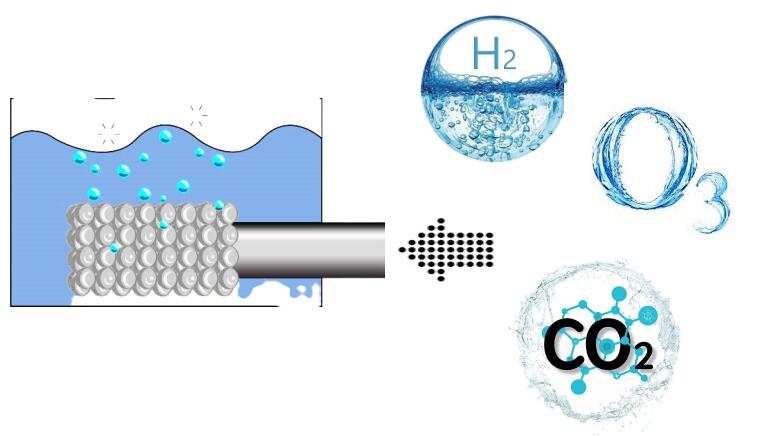-
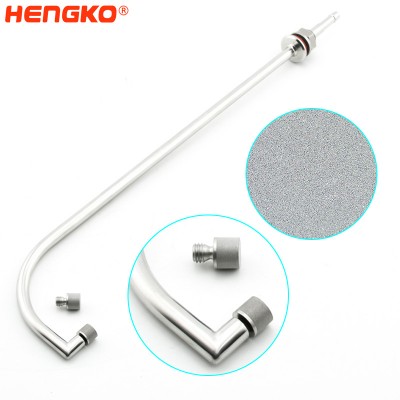
Stainless Steel 316 Micro Spargers and Filter in Bioreactors and Fermentors
Product Describe The function of the bioreactor is to provide a suitable environment in which an organism can efficiently produce a target product. * Cell b...
View Detail -
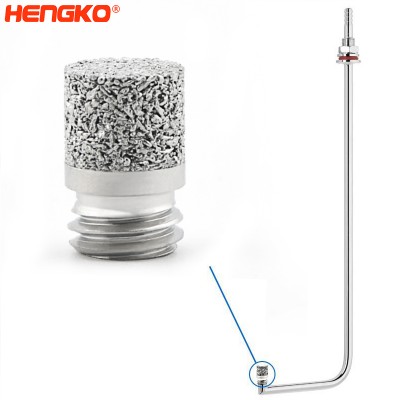
In-tank porous metal spargers or multiple sparger assembly for a large tank, increase g...
Attaches to the tip of the sparger tube, this 316L stainless steel sintered tip is available in a variety of pore sizes. The 5 10 15 50 100 pore frit is the ...
View Detail -
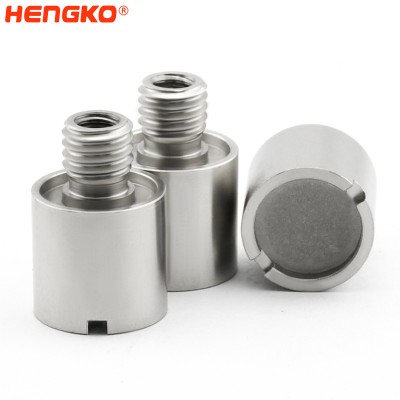
Sintered Microsparger in Bioreactor System for Green chemistry industry
The importance of aeration and gas dispersion to achieve good oxygen mass transfer cannot be understated. This is at the heart of the ability of mic...
View Detail -
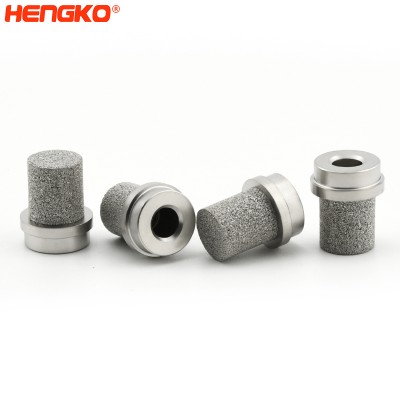
Replacement Micro-Bubble Porous Sparger Tips for Fermentation / Bioreactor Air Aeration...
Advantages of HENGKO Porous Metal Micro Spargers Due to the low solubility of oxygen in many cell culture mediums, optimizing this critical nutrient can be ...
View Detail -
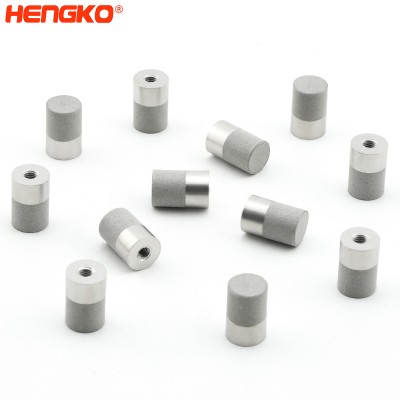
Sintered Micro Porous Sparger in Benchtop for Bioreactors and Laboratory Fermenter
Every bioreactor sparging system is designed for the introduction of oxygen to feed cell cultures. Meanwhile, the system must remove carbon dioxide to preven...
View Detail -
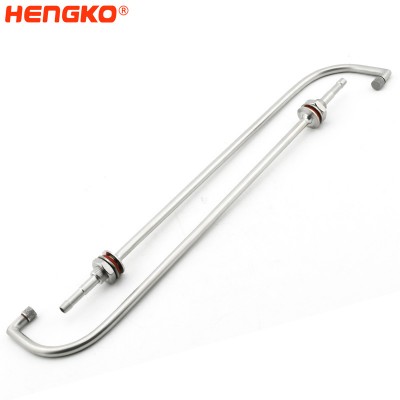
Quick Change Sparger System for Bioreactors and Fermentors Air Sparger Accessories- Mic...
Stainless steel sparger is to supply enough oxygen to the microbes in submerge culture technique for proper metabolism. Each fermentation process requires a ...
View Detail -
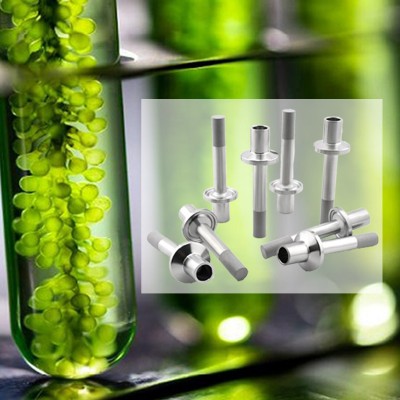
316 Micron Stainless Steel Air Aerator Stone Diffusion Stone Used in Microalgae Photosy...
Product Describe Bioreactors are ‘walls’ of water-filled clear tubes that allow photosynthesis, where microalgae grow with the addition of carbon dioxide. In...
View Detail -
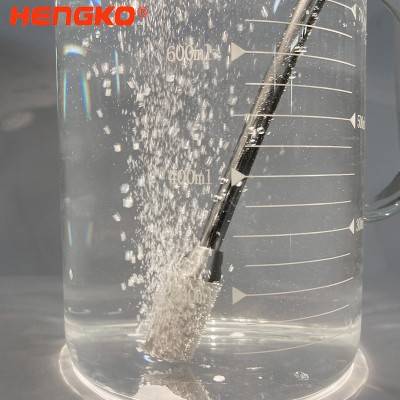
micro-algae indoor growing – stainless steel aeration air stone used to control t...
Product Describe In bioreactors, optimal mass transfer of gases like oxygen or carbon dioxide is difficult to accomplish. HENGKO stainless steel aeration air...
View Detail -
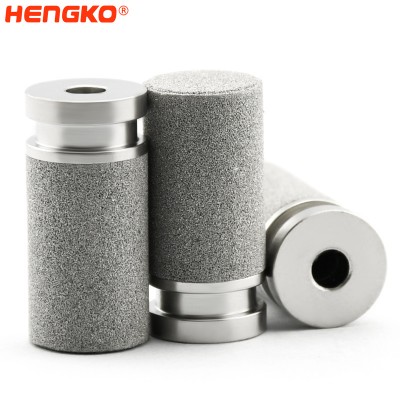
HENGKO sintered porous carbonation stone air sparger bubble diffuser nano oxygen genera...
In bioreactor systems, optimal mass transfer of gases like oxygen or carbon dioxide is difficult to accomplish. Oxygen, in particular, is poorly soluble in w...
View Detail -
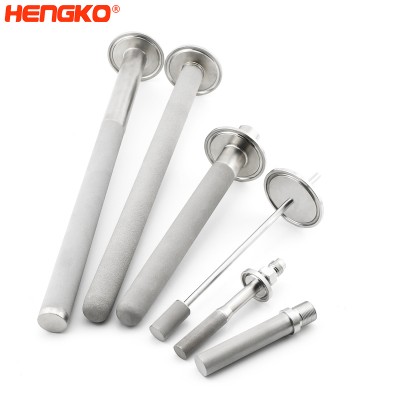
Sintered Sparger Tube with Porous Metal Stainless Steel Tank and In-line Spargers Used ...
Introducing the exceptional HENGKO sintered spargers, the ultimate solution to introducing gases into liquids. This innovative product utilizes thousands of...
View Detail -

Sintered Sparger Stainless Steel Material Quick Change for Bioreactor Systems
In bioreactor systems, optimal mass transfer of gases like oxygen or carbon dioxide is difficult to accomplish. Oxygen, in particular, is poorly soluble in w...
View Detail -
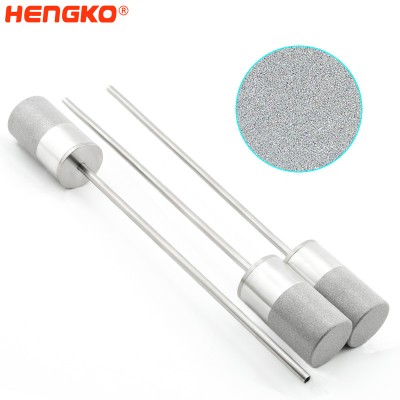
Biotech Removable Porous Frit Micro Sparger for Mini Bioreactor System and Fermentors
Stainless steel sparger used as a cell retention device. The device consists of a metal tube and a sintered metal filter with a pore size of 0.5 – 40 µm. The...
View Detail -
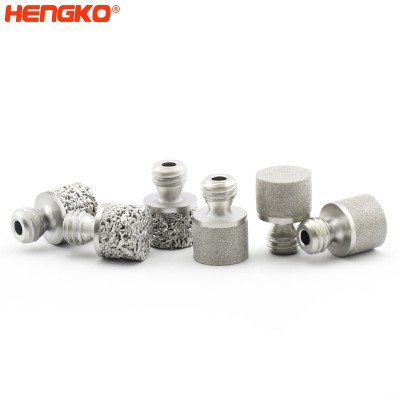
Micro Spargers Increase Gas Transfer and Improve Upstream Reactor Yields for Bioreactors
Introducing HENGKO sintered spargers - the ultimate solution to introduce gases into liquids with ease! Our innovative spargers feature thousands of tiny po...
View Detail -
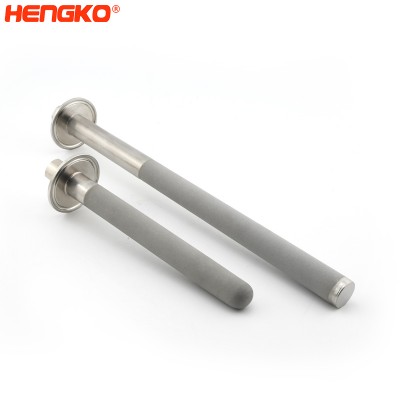
Metal In-Tank Porous Spargers to Increase Gas Absorption
HENGKO sintered spargers introduce gases into liquids through thousands of tiny pores, creating bubbles far smaller and more numerous than with drilled pipe ...
View Detail -
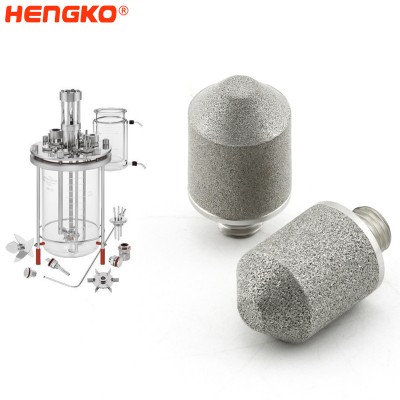
Micro spargers bubble air aeration stone for bioreactor assembly
Micro spargers from HENGKO reduce bubble size and increase gas transfer to reduce gas consumption and improve upstream reactor yields. HENGKO spargers can in...
View Detail -
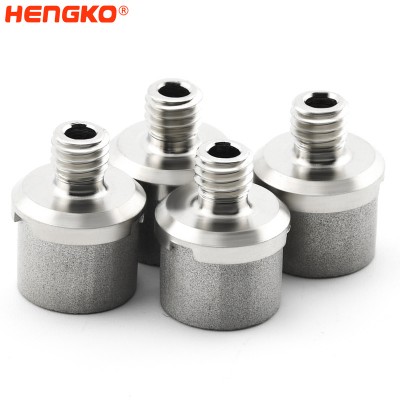
316L stainless steel porous sparger tube sintered tip for fermentation vessel accessories
Attaches to the tip of the sparger tube, this 316L stainless steel sintered tip is available in a variety of pore sizes. The 5 10 15 50 100 pore frit is the ...
View Detail -

Sintered stainless steel 316L aeration carbonation stone air stone ozone air sparger 0....
HENGKO carbonation stone is made of the food grade best stainless steel material 316L, healthier, practical, durable, high temperature resistant, and anti-co...
View Detail
Why HENGKO Porous Sparger and Gas Sparger
HENGKO Technology Co., Ltd. is a high-tech manufacturer dedicated to developing and manufacturing aeration and
brewing equipment accessories. We specialize in sintered stainless steel aeration stone, 316L stainless steel,
home brewing aeration stone, and sintered stainless steel nano-diffuser, among other products.
Our business philosophy is centered around helping customers, achieving employees, and developing together.
We continuously optimize our management system and R&D capabilities to better solve our customers' material
perception and purification needs, and to help them improve their products over time. Our technical level and
product quality have consistently been at the forefront of the industry.
For many years, we have maintained good cooperative relationships with domestic medical, food, beverage,
hydrogen-rich water machine manufacturers, ozone generator manufacturers, bioreactor, fermenter, and other
industries. Our products are exported to Europe, the United States, Japan, Russia, Canada, Australia, Southeast Asia,
and other industrially developed economies with high-quality requirements.
Porous Sparger Benefits
* Higher Porosity — — The general sparger porosity of normal is about 10%, But HENGKO porosity of
porous sparger ranges from 15% to 55%. So you know our porous sparger can transfer gas into the
liquid more efficiently.
* NO Blocking — — Millions of tiny pores can make it carbonate beer and soda before fermentation.
The micron stone is ideal for forcing carbonating your kegged beer or as an aeration stone before
fermentation. Not easy to get clogged as long as it's ungreasy.
* Easy to Use — — Connect your oxygen regulator or aeration pump to the stainless steel diffusion
stone and aerate your wort as the beer flows through the line. Connects inline with any kettle, pump,
or counter flow/plate wort chiller. Using 1/4" ID tubing to connect to the hose barb on the stone.
This carbonation stone can be used with the air pumps. No more need to shake your bottle * 100%
Satisfaction —— We aim to provide the best quality service and product quality for each customer.
* Easy To Sanitize — — Soak this 0.5-micron diffusion stone in water for 20 to 30 seconds. Don't touch
the actual carbonated portion of the stone with your hands
* Durability — — Porous Sparger can be easily cleaned using chemical and physical methods like ultrasonic
cleaning. Hence, it can serve you normally for several years through regular cleaning.
* Multiple Size — — We can supply different sizes of porous sparger with a range from 6" to 48", and the
standard diameter is 0.5" and 1".You are sending us the specification details as your requirements for
porous sparger.
* More resistant to high temperature and corrosion
* Strong structure, not easy to damage, more durable
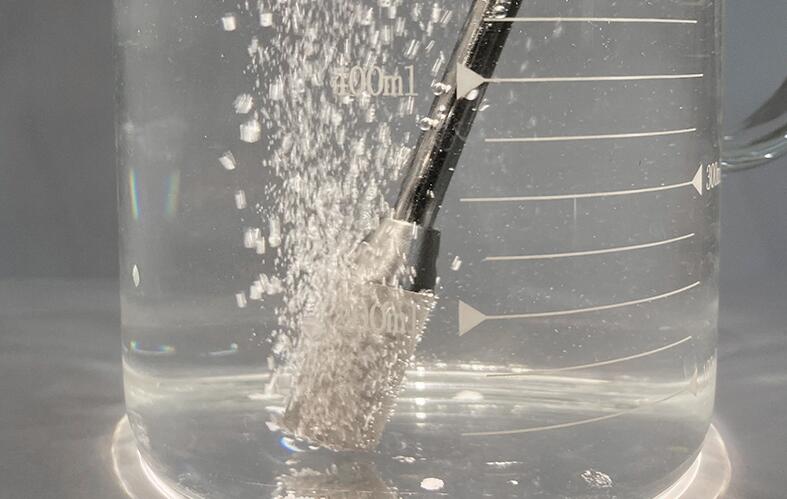
Porous Sparger Application
1. Fermenter
The sparger can create smaller bubbles than traditional spargers with sufficient accuracy, usually ranging
from 0.5 to 12 microns. And it can be used in the fermenter, like wine production, to improve cell growth
in fermentation reactions by sparging oxygen.
2. Food and Beverage
Sintered porous sparger, mainly used to transfer gas into a liquid, can be widely applied in the food and
beverage industry. For example, introducing co2 to beer will extend the beer's life. And sparing nitrogen to
replace oxygen, juices and oils will have a long life.
3. Oxygenation
With high porosity of up to 55%, our porous sparger can generate more gases than the common sparger.
So it is ideally used in fish ponds or aquariums to introduce oxygen.
4. Pharmaceutical Industry
We always use safe and non-toxic metals to fabricate porous sparger. When you need a sparger in the
pharmaceutical industry, you can choose an ozone sparger. Will sanitize Water systems through the
sparging zone with less adverse effects.
5. Green Chemical Industry
Normally porosity design ranges from 0.5 to 12 microns. Our sintered porous sparger can achieve high
efficiency in transferring gas into the liquid. Using it in the green chemical industry can create more
high-quality oxygen to maximize oxygen availability with minimized cost.
6. Microalgae Process Plant
Microalgae is widely used in cosmetics, food supplements or the pharmaceutical industry as raw material.
The porous sparger is an ideal choice to increase the production rate of microalgae biomass and products
in a photobioreactor. Therefore, you can obtain large profits with fewer costs.
7. Bioreactor
HENGKO air sparger can be better used in the bioreactor with better chemical properties. Our sparger will
offer sufficient air or pure oxygen for the bioreactor, improving this reaction created by enzymes or organisms.
8. Hydrogenation
You can use HENGKO's porous sparger to sparger hydrogen for a series of chemical reaction processes, like
hydrogen water filter and hydrogen-rich water maker.
Furthermore, nano-sized hydrogen bubbles will be generated, making them easier to combine with
water molecules.

Questions Guide About Porous Sparger and Gas Sparger
What is a Porous Sparger ?
HENGKO porous sparger, also named sintered sparger, is mainly designed to transfer gas into liquids effectively.
A porous sparger is usually made of metal powder through a sintering process.
HENGKO porous sparger includes various categories, such as liquid sparger, gas sparger, or tank sparger.
We can also fabricate poroussparger to work with different gases, such as co2 sparger, sparger, nitrogen sparger,
oxygen sparger, ammonia sparger, chlorine Sparger, ozone sparger etc.
Compared with conventional sparger, the designed micron rating of our porous sparger ranges from 0.1 to 120 micron
(typically 0.2 to 15 micron). Our porous sparger has a larger contact surface area to create more tiny bubbles.
What is the Working Principle of a Porous Sparger?
A porous sparger is a device used to introduce a gas into a liquid. It consists of a tube or pipe with small
pores or openings on its surface, through which the gas is released into the liquid. The working principle
of a porous sparger is based on the process of diffusion, which is the movement of a substance from an
area of higher concentration to an area of lower concentration.
When a gas is introduced into the liquid through the pores of the sparger, the gas molecules will diffuse into
the liquid, spreading out and mixing with the liquid. Several factors, including the size of the pores, the
sparger's surface area, the gas's pressure, and the viscosity and density of the liquid, determine the rate
at which the gas diffuses into the liquid.
Porous spargers are used in various applications, including wastewater treatment, chemical processing,
and fermentation. They can be made from various materials, including metal, plastic, and ceramic, and
are available in various sizes and shapes to suit different applications.
What Are the Components of a Porous Sparger?
A porous sparger is a device used to introduce gas into a liquid. It typically consists of the
following components:
1. A gas inlet is a connection through which the gas is introduced into the sparger.
2. A porous medium: This material allows the gas to pass through but retains the liquid.
The porous medium is typically made of a material such as sintered stainless steel,
ceramic, or plastic.
3. A diffuser: This is a device that helps to distribute the gas throughout the liquid evenly.
4. A support structure: This framework holds the porous medium and diffuser in place.
5. More: A liquid inlet and outlet are connections through which the liquid enters and exits the sparger.
In some cases, a porous sparger may also include additional components such as a pressure
regulator, flowmeter, or valve, depending on the specific application.
What is the Function of a Porous sparger?
The primary function of a porous sparger is to introduce gas into a liquid. It can use for a variety
of purposes, including:
1. Oxygenation: Porous spargers are often used to introduce oxygen into water, for example, in
aquaculture or wastewater treatment. This can help to improve the quality of the water and
support the growth of aquatic life.
2. Aeration: Porous spargers can also introduce air into liquids, which can help mix and agitate
the liquid and improve its oxygen content. This can be useful in various industrial processes,
such as fermentation and chemical reactions.
3. Degassing: Porous spargers can be used to remove dissolved gases from liquids by introducing
a less soluble gas. This can be useful in various applications, such as removing dissolved gases
from beer or wine.
4. Gas transfer: Porous spargers can transfer gases from one vessel to another, such as from a
gas cylinder to a tank or reactor.
In general, the function of a porous sparger is to effectively and efficiently introduce gas into a liquid
and to control and regulate the flow of gas and liquid as needed.
What Applications use a Porous sparger?
Porous spargers have a wide range of applications in a variety of industries. Some common examples include:
1. Aquaculture: Porous spargers are often used to introduce oxygen into water, which can help support
aquatic life's growth.
2. Wastewater treatment: Porous spargers can introduce oxygen into wastewater to help facilitate the
biological treatment process.
3. Fermentation: Porous spargers can introduce air into liquids during fermentation processes, such as
in the production of beer or wine.
4. Chemical reactions: Porous spargers can introduce gases into liquids during chemical reactions,
such as in the production of pharmaceuticals or fine chemicals.
5. Food and beverage processing: Porous spargers can introduce gases into liquids during food and
beverage processing, such as in the production of carbonated beverages or the pasteurization of milk.
6. Oil and gas: Porous spargers can be used in the oil and gas industry to introduce gases into liquids
during various processes, such as enhanced oil recovery or gas injection.
7. Environmental remediation: Porous spargers can introduce gases into liquids to facilitate
environmental remediation processes, such as bioremediation.
Why Use Sintered Melt Porous Sparger?
Sintered melt porous spargers are a type of porous sparger made by melting and sintering a material,
such as stainless steel or bronze, to create a porous medium. These spargers are often used
because of their several advantages, including:
1.High porosity: Sintered melt porous spargers have high porosity, meaning they have a large surface
area through which gas can pass. This allows for the efficient gas transfer and can help improve
the sparger's performance.
2. High strength: Sintered melt porous spargers are typically made of high-strength materials,
such as stainless steel or ceramic, which gives them good mechanical strength and durability.
3. Chemical resistance: The materials used to make sintered melt porous spargers are typically
resistant to corrosion and chemical attack, making them suitable for use in various applications.
4. Customization: Sintered melt porous spargers can be customized to suit the specific needs of
an application, such as by changing the size or shape of the porous medium or the gas inlet.
Anyway, sintered melt porous spargers are a popular choice for many applications because of their
high porosity, strength, etc
What Material is Used to Make a Porous Sparger?
Various materials can be used to make porous spargers, and the most suitable material depends
on the application's specific requirements. Some common materials used to make porous spargers include:
1. Stainless steel: Stainless steel is a strong, corrosion-resistant material often used to make
porous spargers. It is available in various grades, including 304 and 316, which are suitable for
different applications.
2. Ceramic: Ceramic materials, such as alumina and silicon carbide, are often used to make porous
spargers because of their high strength and durability. They are also resistant to chemical attacks
and can operate at high temperatures.
3.Plastic: Plastic materials, such as polyethylene and polypropylene, can make porous spargers.
They are lightweight and inexpensive but are not as durable or resistant to chemical attack as
some other materials.
4. Glass: Glass can also be used to make porous spargers, but it is generally less common than
other materials because it is fragile and can be brittle.
The material used to make a porous sparger depends on the application's specific requirements,
such as the type of gas introduced, the operating temperature, the chemical environment, and the
required strength and durability.
How Many Types of Porous Spargers are in the market?
Several types of porous spargers are available in the market, each with its specific characteristics
and benefits. Some common types of porous spargers include:
1. Sintered melt porous spargers are porous spargers made by melting and sintering a material,
such as stainless steel or ceramic, to create a porous medium. They are known for their high
porosity, strength, and chemical resistance.
2. Porous plastic spargers are porous spargers made of plastic materials, such as polyethylene
or polypropylene. They are lightweight and inexpensive but are not as durable or resistant to
chemical attack as some other materials.
3.Ceramic spargers are porous spargers made of ceramic materials, such as alumina or silicon
carbide. They are strong, durable, and resistant to chemical attacks and high temperatures.
4.Glass spargers: These are porous spargers made of glass. They are less common than other
types of spargers because they are fragile and can be brittle.
5.Porous metal spargers are porous spargers made of metal, such as stainless steel or aluminum.
They are strong and durable but may be more expensive than some other spargers.
Overall, the type of porous sparger most suitable for a specific application depends on the
application's specific requirements, such as the type of gas being introduced, the operating
temperature, the chemical environment, and the required strength and durability.
How to Choose Porous Sparger, Good or Bad?
There are several factors to consider when choosing a porous sparger, and the most suitable
sparger for a specific application depends on the application's specific requirements. Some
factors to consider when choosing a porous sparger include:
1. Type of gas: The type of gas introduced into the liquid should be considered when choosing
a porous sparger. Different spargers may be more or less suitable for different gases, depending
on factors such as the solubility and reactivity of the gas.
2. Operating temperature: The operating temperature of the sparger should be considered when
choosing a porous sparger. Different materials may have different temperature limits, and the
sparger should be able to operate within the temperature range required for the application.
3. Chemical environment: The chemical environment in which the sparger will be used should
be considered when choosing a porous sparger. Different materials may have different levels of
chemical resistance, and the sparger should be able to withstand the specific chemicals present
in the application.
4. Strength and durability: The strength and durability of the sparger should be considered when
choosing a porous sparger. Different materials may have different levels of strength and durability,
and the sparger should be able to withstand the specific conditions of the application.
5. Cost: The cost of the sparger should also be considered when choosing a porous sparger.
Different materials and designs may have different costs, and the most suitable sparger for an
application may depend on the specific budget constraints.
Overall, choosing a porous sparger involves considering a range of factors to ensure that the
sparger is suitable for the application's specific requirements.
How Long Can a Porous Sparger Work?
A porous sparger's lifespan depends on various factors, including the type of material used to make
the sparger, the operating conditions, and the level of maintenance. Depending on these factors,
some porous spargers may have a longer lifespan.
In general, porous spargers made of high-quality materials and designed for the specific operating
conditions of an application are likely to have a longer lifespan. Proper maintenance and cleaning
can also help extend a porous sparger's lifespan.
It isn't easy to give a specific lifespan for a porous sparger because it depends on many variables.
Generally, a porous sparger should be inspected regularly to ensure it is in good condition and
functioning properly. If any issues are identified, the sparger should be repaired or replaced as
needed to ensure its continued operation.
How to Clean a Porous Sparger ?
Several steps can be taken to clean a porous sparger, depending on the application's specific needs.
Some general guidelines for cleaning a porous sparger include:
1. Disconnect the sparger from the gas and liquid lines, and remove it from the vessel or system
in which it is used.
2. Rinse the sparger with water to remove any loose debris or dirt.
3. If the sparger is heavily soiled or has accumulated deposits, it may be necessary to soak it in
a cleaning solution. Common cleaning solutions for porous spargers include water and mild
detergents or specialized cleaning agents formulated for the specific type of material used
in the sparger.
4. After soaking, rinse the sparger thoroughly with water to remove any remaining cleaning
solution or debris.
5. If the sparger has become clogged or the porous medium has become damaged, it maybe
necessary to remove it and clean or replace it as needed.
6. Once the sparger has been cleaned and any necessary repairs have been made, it can be
reassembled and installed in the vessel or system.
Overall, cleaning a porous sparger involves rinsing and soaking the sparger to remove dirt and
debris and making any necessary repairs or replacements to the porous medium. It is important to
follow the specific cleaning and maintenance instructions provided by the manufacturer to ensure
that the sparger is properly cared for and continues to operate effectively.
What is oxygen sparger ?
An oxygen sparger is a device used in industries such as biotechnology, pharmaceuticals, and wastewater treatment, to deliver a controlled amount of oxygen into a liquid medium.
It typically consists of a porous material or distribution system that disperses small oxygen bubbles into the liquid, allowing for efficient transfer of oxygen into the solution.
Oxygen spargers are commonly used in fermentation processes to optimize cell growth and product formation.
What is Nitrogen Sparger?
A nitrogen sparger is a similar device to an oxygen sparger, but its purpose is to deliver a controlled amount of nitrogen gas into a liquid medium.
It is commonly used in industries such as food and beverage, pharmaceuticals, and chemicals where it is essential to prevent the oxidation of the liquid during processing or storage.
Nitrogen spargers can also be used to remove dissolved oxygen from a liquid, as nitrogen gas is inert and does not participate in chemical reactions.
The sparger is typically made of a porous material that allows for the dispersion of small nitrogen bubbles into the liquid, allowing for efficient transfer of nitrogen gas into the solution.
Sintered Microsparger vs Ring Sparger, Which Will be Better ?
Both sintered microspargers and ring spargers have their advantages and disadvantages, and the better option will depend on the specific application and process requirements.
1. Sintered Microspargers have a smaller pore size and higher surface area, which can help to achieve better gas dispersion and mass transfer in the liquid. This can lead to better oxygen removal and higher efficiency in processes such as fermentation, aeration, and gas stripping. However, sintered Microspargers can be more expensive and may be prone to clogging or fouling if the liquid contains particles or debris.
2. Ring Spargers, on the other hand, have a larger surface area and can cover a wider area of the liquid surface. They are often used in larger vessels or tanks and can be more cost-effective than sintered microspargers. However, ring spargers may not be as efficient in gas dispersion and may require higher gas flow rates to achieve the desired level of mass transfer.
In summary, the choice between Sintered Microspargers and ring spargers will depend on the specific needs of the process, and both options can be effective in different applications.
What is Sparger In Fermenter ?
A sparger in a fermenter is a device used in biotechnology and biopharmaceutical processes to introduce air or other gases, such as oxygen or carbon dioxide, into a liquid culture or broth.
It is a porous or perforated device that is installed at the bottom of the fermenter, which allows for even distribution of gases throughout the vessel and promotes the growth of microorganisms or other cells.
The sparger creates bubbles that help to mix the contents of the bioreactor, increase oxygen transfer, and improve cell metabolism and growth rates.
The use of spargers is critical in a variety of bioprocessing applications, including bioreactor scale-up, fermentation, and cell culture.
So if Still Have Questions For the Porous Sparger and Gas Sparger , You Are Welcome to Contact us
by email ka@hengko.com, or You Can Also to Send Inquiry as follow form :
